"We never imagined we would be the ones fleeing"
NRC's Ali Alhajori speaks from Yemen.
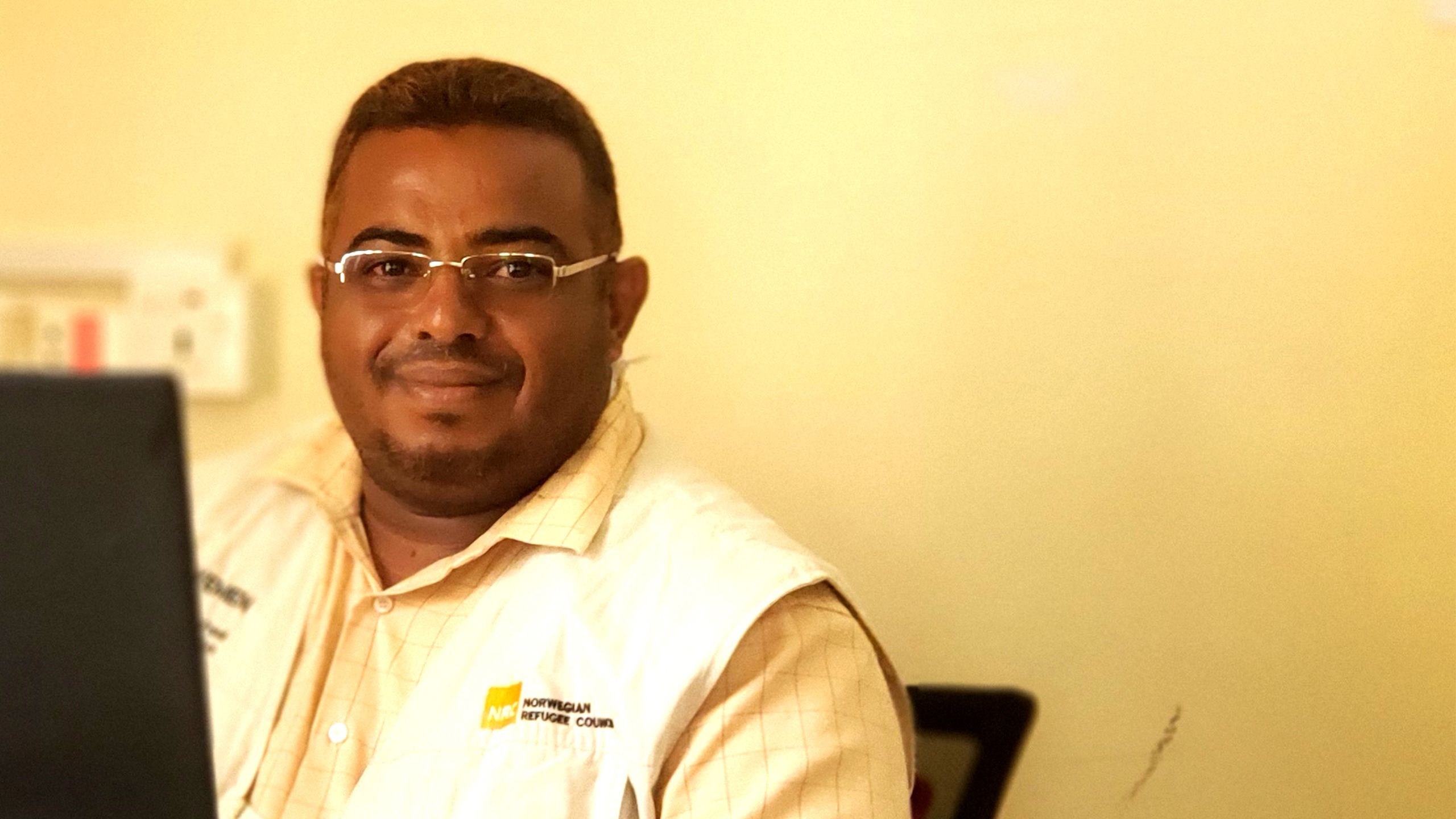
What is it like to be working in the worst crisis in the world, when it is also your home? Ali Alhajori, emergency response coordinator with the Norwegian Refugee Council (NRC), describes his experiences.
I have been a humanitarian worker for eight years in my home country of Yemen.
Most people talk about the war beginning in 2015, but it reached me long before that. At the end of 2009, my city of Harad started receiving what seemed like refugees. They were from Sa’ada, near the border with Saudi Arabia, and they were fleeing for their lives.
"We couldn’t just sit there, knowing that we were able to eat well and sleep well in our homes."
We had heard about the fighting up there, but mostly as rumours. These families set up tents on bare pieces of land. We couldn’t just sit there, knowing that we were able to eat well and sleep well in our homes, while they were starving. So, some of us formed a committee and went door-to-door gathering donations. That was my first experience of humanitarian work.
I remember that even neighbours who had very little themselves, gave food. But more people kept coming. Whatever we gathered, it was never enough.

Ali fled barefoot, and had to buy shoes on his journey. Photo used as an illustration. Photo: Hani Mohammed/AP Photo/NTB Scanpix
Ali fled barefoot, and had to buy shoes on his journey. Photo used as an illustration. Photo: Hani Mohammed/AP Photo/NTB Scanpix
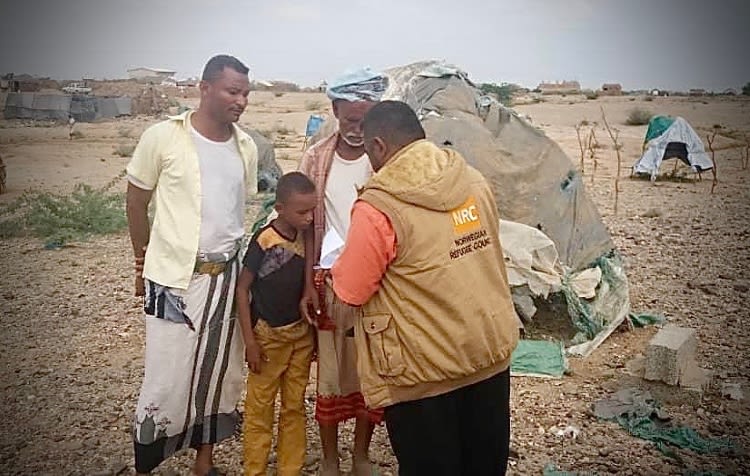
Ali delivering aid to newly displaced families in 2018. Photo: NRC Yemen
Ali delivering aid to newly displaced families in 2018. Photo: NRC Yemen
As bad as the situation was, we didn’t expect it to go on. We all thought it would last a few days, maybe a few weeks at most.
How wrong we were.
Back then, my wife and I were living in an apartment, but we had plans to build our own house. I am from a small village in Hajoor, where all the houses were built from stones and clay. It was peaceful, that’s what I remember. The whole family worked on the farm together.
We grew mangoes, and a little corn. There are so many types of mangoes in Yemen. Ours were called Al-Zubdah, which means “butter”, because that’s how they tasted – so buttery and good. Sudani was the very best type, but you can’t get them anymore. There is no longer water to irrigate the fields.
We never thought what was happening in Sa’ada would reach us. We never imagined we would be the ones fleeing.
Harad was where so many people – displaced people, migrants from Ethiopia – had gathered. It was meant to be safe. I had started working with a humanitarian organisation, helping displaced people in the city.
Then, eight strikes fell in one night, two on buildings right next to us. It sounded not like a bomb, but like an earthquake. Eighty people were killed. My friend had both legs broken. When I found him, he couldn’t even form words because of the pain. He just called my name over and over.
We couldn’t find a car for all of us. I sent my family on ahead in a small car – taking what we thought we might need, like mattresses and some water jugs – while I stayed behind to close up the apartment. We thought we would be back in a few days.
NRC works in some of the most hard-to-reach areas of Yemen to support those who have been forced to flee. Support our work today.
On the second day, everyone started leaving the city on foot. No cars on the road, just people. There was no time to think or wait. I left everything, grabbed only my laptop bag. I didn’t even remember my shoes – I had to buy a pair on the way. It was somewhat comforting to be in a group, as if we were all on a pilgrimage and not fleeing for our lives.
The sound of the jets was still overhead. They reminded me of a shark, hunting us.
I walked for five kilometres. My friend passed in a pickup and stopped for me. He dropped me in Abs city, which was safe, at least back then. Then a few months later it wasn’t, and we decided to keep moving south.
***
Ali and his family eventually settled in Hajjah city, where he got a job with the Norwegian Refugee Council (NRC) as an emergency response coordinator in Hajjah and Hodeidah.
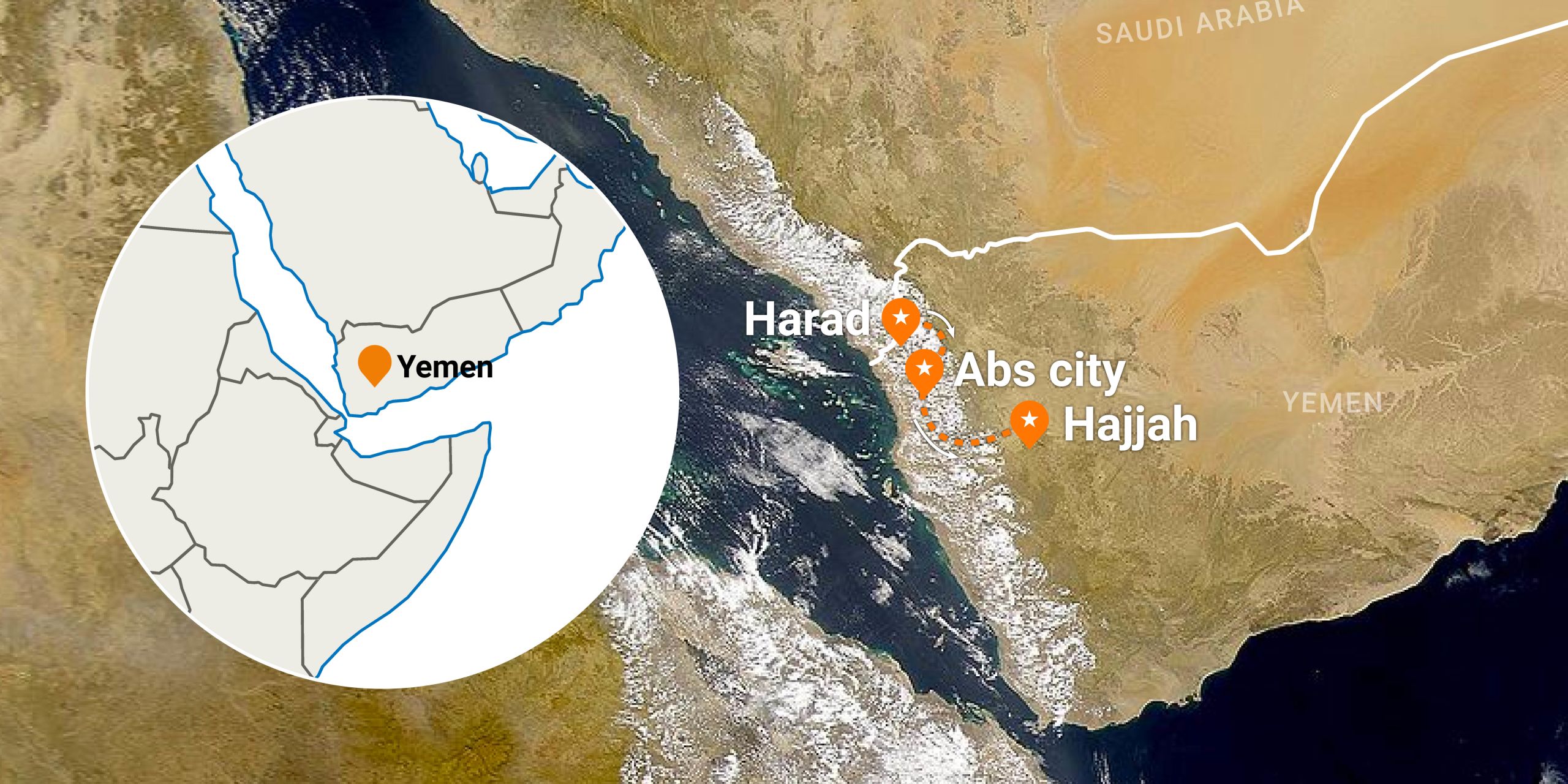
A map showing Ali's journey from Harad, to Abs city, and finally settling in Hajjah. Design: Claes Holmberg
Again and again, the displaced people I meet just ask to go home. We don’t need any help, they say, if we could just go home. I understand that now. Our things are still there in Harad, although by now of course they are probably stolen. We heard that even the doors of the apartment had been taken – one friend recognised his own front door for sale in a second-hand market.
All our neighbours from that time have been scattered: to Amran, to Hajjah, to Hodeidah. Last week in the market I bumped into one neighbour and discovered he had moved again and again and again, before also ending up here.
My wife received a WhatsApp video recently of Harad before the war. So many cars, people, buildings. Now it’s empty.

A map showing Ali's journey from Harad, to Abs city, and finally settling in Hajjah. Design: Claes Holmberg
A map showing Ali's journey from Harad, to Abs city, and finally settling in Hajjah. Design: Claes Holmberg
We started the Rapid Response project in July 2018, almost exactly two years ago.
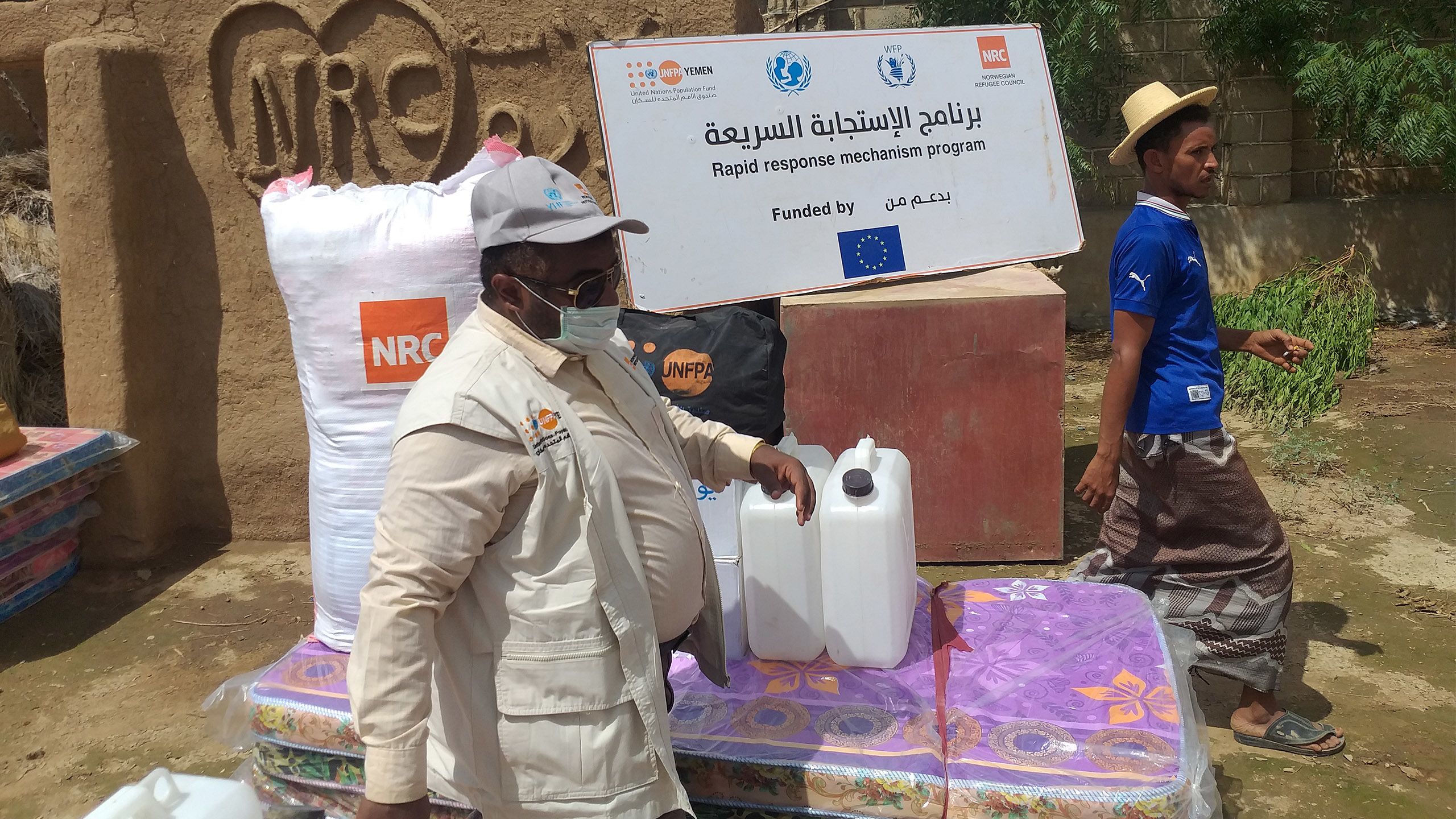
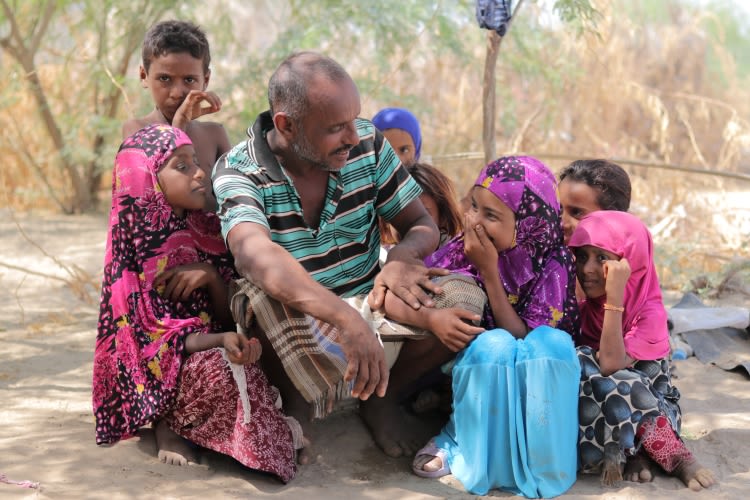
A family living in a hard-to-reach area of Hodeidah governorate. Photo: Mahmoud Al-Filistini/NRC
A family living in a hard-to-reach area of Hodeidah governorate. Photo: Mahmoud Al-Filistini/NRC
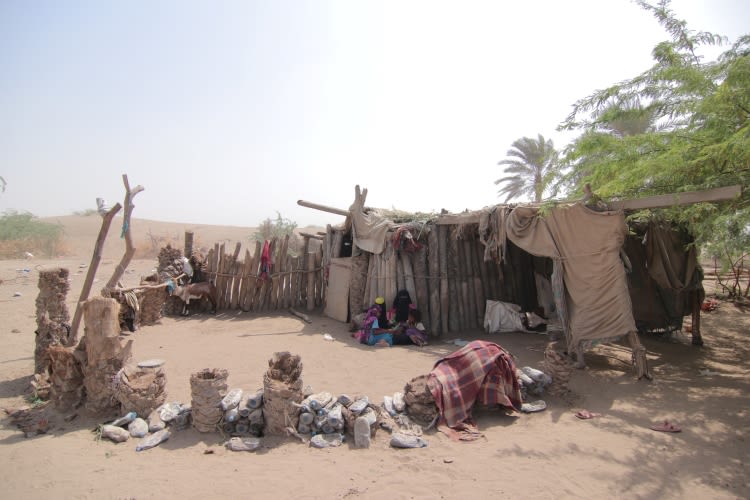
The house of a family in Hodeidah governorate. Photo: Mahmoud Al-Filistini/NRC
The house of a family in Hodeidah governorate. Photo: Mahmoud Al-Filistini/NRC
I had been with the Norwegian Refugee Council for a few years by then. The conflict had invaded Medi and Hairan, and the people who had managed to hold on until then now had to flee.

A family living in a hard-to-reach area of Hodeidah governorate. Photo: Mahmoud Al-Filistini/NRC
Some people I can’t forget. There was an old man sitting under a tree. He had an empty flour bag he was using as a bed. We approached him to ask where his family were, and the man started crying. His family were crouched behind the tree, with nothing – nothing. No blankets, no mattresses, no food, no money. Just the empty flour packet.
We all cried when we saw that. I went back to our management team and said we must do something.
Ali talks about NRC's emergency response work in Yemen.
That first group we helped was over 900 people. This was our pilot, and we spent our Eid holiday out in the fields, helping these families. Since then, it has become a big part of what NRC does – we have now reached about 50,000 people with our Rapid Response team. We rent warehouses and stock up the supplies in advance, so that we can be out there and helping within days.
The safety of civilians in Hodeidah, where Ali and his team work, is under threat. In recent weeks, the fighting there has escalated. Children have been killed and injured, civilian homes have been shelled, and markets and farms damaged. Our emergency response is now more important than ever, especially for the three quarters of a million displaced people who live in Hodeidah and Hajjah. Donate to support our work, and share this story.
We are often the first people phoned when a crisis happens.
I go out and actually do the distributions, and I bring my managers, to make sure we really understand what people are facing and remind ourselves who we are doing this work for. It has helped that our funders are willing to be flexible, so that we can quickly scale up and get out there.
Qarah is one of the most inaccessible areas we work in. It is right on the top of the mountains. The roads are so bad that we have to get out of the vehicle a lot – it can’t cope with a full load.
It’s just sky up there. And you can see all the way over the valleys, as far as the border with Saudi Arabia.
It’s a relief to be stable enough now to be able to think about helping others. Immediately after I fled my own home, I couldn’t even do that.
Qarah, one of the most inaccessible areas we work in. Video: Hassan Mamoon/NRC
Qarah, one of the most inaccessible areas we work in. Video: Hassan Mamoon/NRC
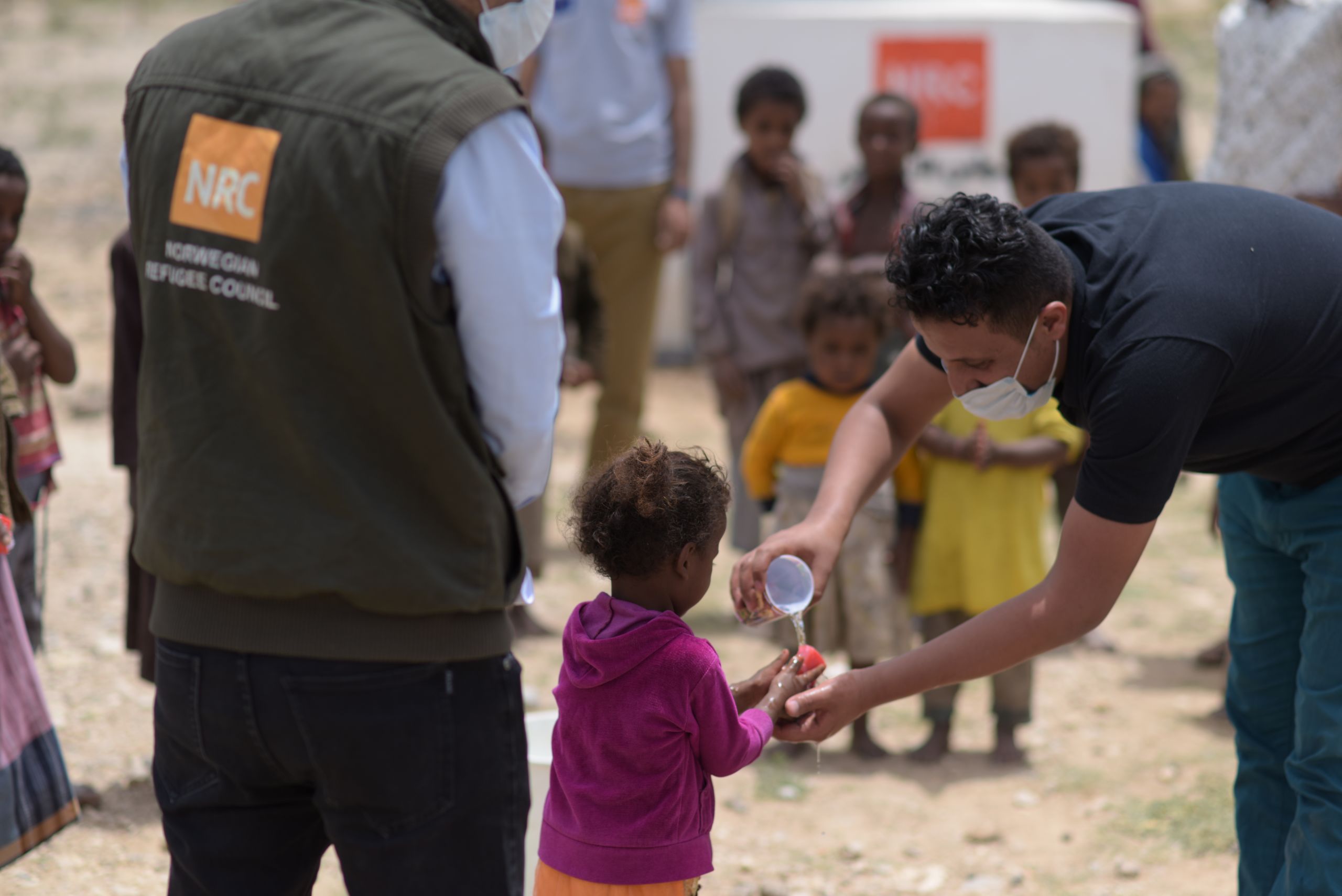
As part of our emergency response to Covid-19 in Yemen, this NRC staff member in Amran's Kharef displacement camp teaches a young child how to wash their hands. Photo: Ibrahim Al-Salmi/NRC
As part of our emergency response to Covid-19 in Yemen, this NRC staff member in Amran's Kharef displacement camp teaches a young child how to wash their hands. Photo: Ibrahim Al-Salmi/NRC
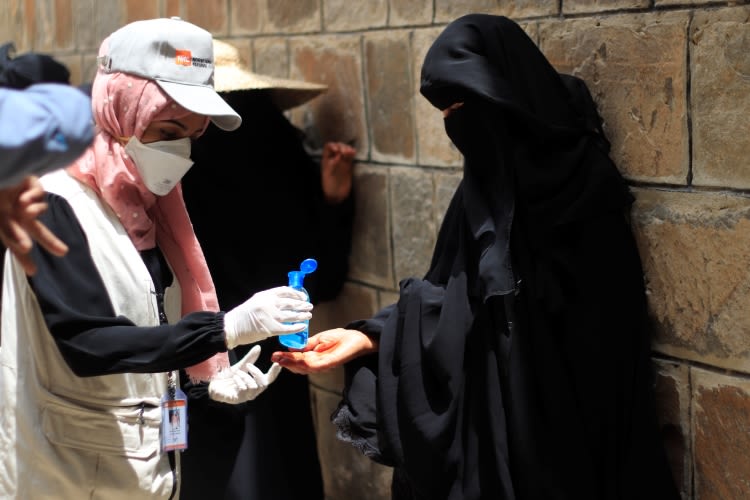
Our aid distributions have been adapted to ensure the protection of displaced people and our staff. Everyone must use hand sanitiser and keep their distance from each other. Photo: Abdulfatah Al Jaboly/NRC
Our aid distributions have been adapted to ensure the protection of displaced people and our staff. Everyone must use hand sanitiser and keep their distance from each other. Photo: Abdulfatah Al Jaboly/NRC
I first heard about coronavirus at work, before most people in the country did.
We weren’t scared at the time, we just felt sympathy for those dying in other countries. We were sure Yemen would not be affected by it. We were so cut off by the sea on most sides, and the borders are very restricted. We thought this part of the map might be forgotten, and we were relieved. We knew we didn’t have the ability to face it, when our biggest health problem is just getting enough food to stay alive.

As part of our emergency response to Covid-19 in Yemen, this NRC staff member in Amran's Kharef displacement camp teaches a young child how to wash their hands. Photo: Ibrahim Al-Salmi/NRC
I don’t know when it started to shift, but I began listening to the radio every day, hearing the numbers going up. My youngest child [aged 9] used to play outside, but I keep him inside now. It’s terrible; it feels like putting him in jail. I’ve downloaded him games and shown him YouTube to try to make it easier.
"I have never thought about stopping. People need this assistance."
We started doing awareness sessions with families, showing them handwashing, putting in place social distancing, asking everyone to sanitise their hands. They saw it as just a story, a tale. “We are being killed by the heat,” they said, particularly people in the Tihama [coastal] areas. “The virus will be killed too.”

Our aid distributions have been adapted to ensure the protection of displaced people and our staff. Everyone must use hand sanitiser and keep their distance from each other. Photo: Abdulfatah Al Jaboly/NRC
Now we have people coming to the distributions and they are the ones asking for the hand sanitiser. It isn’t just knowledge anymore, it has become their behaviour.
I have never thought about stopping. People need this assistance.
I am protective of my team, and I would tell them to stay home if they felt unsafe, but they wanted to continue. They are living among these people, they know the situation, they cannot ignore them.
Every day there are families arriving – we never know where and how many it will be, but we know it will continue because this is what war does. We have a group on WhatsApp, and we get updates every day. By the next day, we have a team out there making lists and registering people and assessing what they need.
This rainy season is not like previous years. It rains day and night. I’ve met people living in the valleys around here, and their roofs have been swept off in the floods. One old man told me his family have been living here for generations and had not seen floods like this in 100 years. Another man told us his family was staying put at home, even if they died there - because leaving the house would mean dying too, but their bodies would be washed up who knows where?
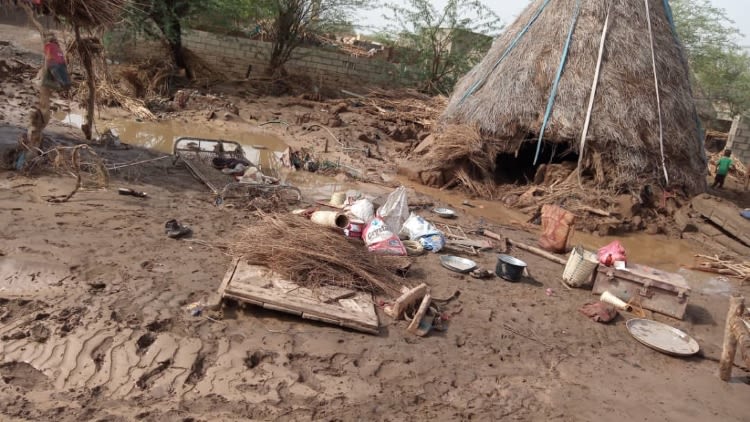
The shelters that displaced people live in are often unable to withstand flooding. Photo: Ahmed Tashlan/NRC
One family had all their belongings swept away while they slept, and woke up to find water rushing through the house. The father told me: “I still feel like I am sleepwalking, and this is all a bad dream. We fled with our children in our arms. Just minutes after we left, all three rooms collapsed. I would have been killed by the bricks.”
I have heard of people getting stuck in the deep mud, even after the water levels fell. One brother died while trying to save the other; I couldn’t sleep that night after I heard about that. That was in Al-Zuhra.
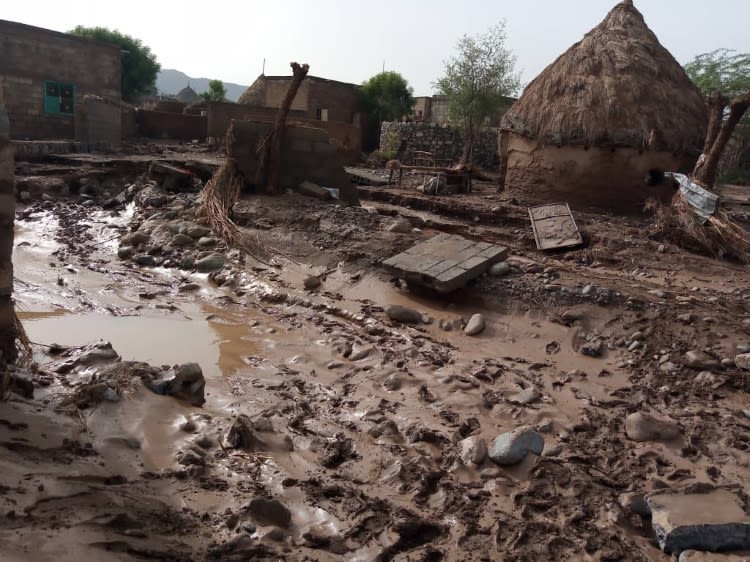
The shelters that displaced people live in are often unable to withstand flooding. Photo: Ahmed Tashlan/NRC
At least we’re able to help. It’s only simple things like food, mattresses, and emergency shelter kits, but it’s something concrete we can do.

The shelters that displaced people live in are often unable to withstand flooding. Photo: Ahmed Tashlan/NRC
The shelters that displaced people live in are often unable to withstand flooding. Photo: Ahmed Tashlan/NRC

The shelters that displaced people live in are often unable to withstand flooding. Photo: Ahmed Tashlan/NRC
The shelters that displaced people live in are often unable to withstand flooding. Photo: Ahmed Tashlan/NRC
The safety of civilians in Hodeidah, where Ali and his team work, is under threat. In recent weeks, the fighting there has escalated. Children have been killed and injured, civilian homes have been shelled, and markets and farms damaged. Our emergency response is now more important than ever, especially for the three quarters of a million displaced people who live in Hodeidah and Hajjah. Donate to support our work, and share this story.
